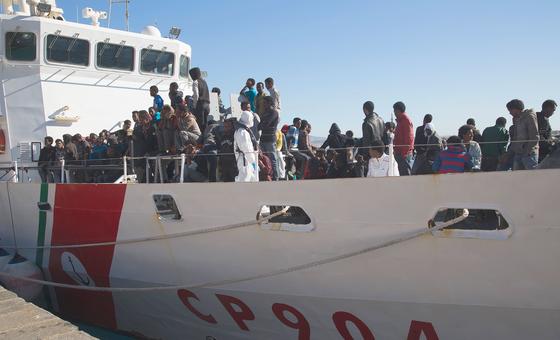A new report from the UN refugee agency (UNHCR) confirmed that each year, hundreds of thousands of people risk their lives to migrate from sub-Saharan countries in Africa without access to immediate assistance, shelter or information about the dangers they may face including from traffickers – even though the location of major movement hubs is well known.
Avoidable dangers
Vincent Cochetel, UNHCR Special Envoy for the Central Mediterranean, said that the absence of critical services placed refugees and migrants “at great risk of harm and death” and also triggered dangerous secondary journeys.
“Our capacity to partner directly with local authorities is missing. Yet, those local authorities are there, they are located on those routes that are used for migrants and refugees, they are located in places where humanitarian actors cannot be present, either because of safety concern or because authorities don’t want humanitarian actors to be present”, he added.
To remedy the situation and save lives, the UNHCR official called on donors and stakeholders to support the agency’s humanitarian work and that of local partners in targeted locations.
“This includes better access to legal pathways to safety and improving protection services for victims, as well as those at risk of becoming victims along the routes,” Mr. Cochetel explained.
Anti-trafficking focus
The UNHCR report noted that services specifically tailored for victims of trafficking remain scarce, despite efforts to strengthen protection for them along migration routes in Ethiopia, Niger, Egypt and Morocco, where national strategies exist to combat the practice including national referral mechanisms for victims of trafficking.
“There are clear links between trafficking in persons and violence against women and the report highlights the lack of specialized services and assistance measures for female victims of trafficking (VoTs),” the UNCHR publication reads.
“Only in Morocco and Ethiopia are services available for women at risk or VoTs. However, even these limited services are at risk of discontinuation next year.”
International face of migration
As well as African migrants, some have journeyed from Asia and the Middle East.
Many underestimate the risks and dangers and many die while crossing the desert or near borders, UNHCR said, noting that most also suffer serious human rights violations, including sexual violence, kidnappings, torture and physical abuse.
“Many don’t go to capital cities where humanitarian actors are based and well represented,” Mr. Cochetel told journalists in Geneva. “They embark to secondary routes, reaching smaller cities in hard-to-reach areas” including in the Sahara Desert. “This is where services should be located.”
With the right level of funding, supported services could provide immediate humanitarian assistance, shelter, referral mechanisms, information on the dangers involved in embarking on hazardous journeys and access to justice.
Libya lead
Taking the example of Agadez in central Niger in the Saharan Desert – a major migration hub towards Libya and where the security situation remains extremely dangerous for migrants – Mr. Cochetel emphasized that local authorities are present: “Let’s work with these authorities. These authorities see the problem and they would like to do something. Desert search and rescue, that’s something we’d like to develop”.
Measures promoted by UNHCR to protect migrants from trafficking include:
- Bolstering the early identification of refugees and migrants at risk or victims of trafficking both on the land routes and upon disembarkation;
- Facilitating access to solutions for VoTs including regular pathways, such as family reunification and humanitarian evacuation;
- Enhancing regularization of migrants and longer-term support in host countries – offering voluntary return to countries of origin “should not be the only solution considered, as it may lead to risks of re-trafficking upon return”;
- Facilitating access to legal support, including for access to justice and remedies. Enhancing access to support for male victims of trafficking, as men are often not eligible for the limited support that is available.
According to the UNHCR, 108.4 million people worldwide are forcibly displaced. Most refugees – 76 per cent – are hosted by low and middle-income countries.
In addition, the UN migration agency IOM reports more than 280 million international migrants on the move, representing 3.6 per cent of the global population.

